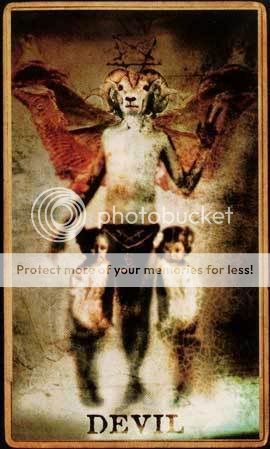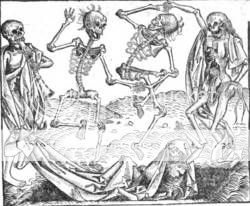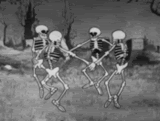If you are using Chrome, click the red hand button at the top right of the screen:

Then select: Don't run on pages on this site
If you do it correctly, the red hand will turn to green and you will no longer see this message.
I wrote this one also for a contest in the Coven.
Posted: 01:16:18 - Oct 18 2008
The hanged river of words and the puppet
Explosion
far away somewhere
All of a sudden the nest of sky is grey
and my ears lie under seas of ashes
caressed by your hanging hand
frail rope that cuts horizon in an attempt of
conquering new
spaces
between words
My implosion
far away
and suddenly
the diamond goes back in sand
One rope for every thought
and the spaces
between our words
became worlds
and someone must whisper me the line
because they all are waiting
for my explosive acting
And then
some crazy delicate angel tosses in me
grey skies and sands
broken horizons,
words and ashes
her onyx eyes
and the ropes that pull me into life
and I sense my lungs
filled with the first air
before I start to cry in pain
: just don`t give birth to me!
The wizard opens a new window
and start typing
Words
The oldest modern human remains in Europe were discovered in the "Cave With Bones" in present day Romania. The remains are approximately 42,000 years old and as Europe’s oldest remains of Homo sapiens, they may represent the first such people to have entered the continent.
http://en.wikipedia.org/wiki/Pe%C5%9Ftera_cu_Oase
Damn!
The first in Europe? Why did we wait until 2007 to enter the European Union?
*scratches head*

"There are countless myths of dragons from all over the world. More often then not, the dragon is a fearsome and terrible beast that is destroyed by a courageous hero. What creature was the inspiration for the original dragon or did they in fact exist? I have heard many explanations: dragons are based on dinosaurs or their fossilized remains, dragons are fabrications based on overly exaggerated events, dragons are yet another tool in the arsenal of social control. I will discuss the major theories I have encountered about the origin of dragons and add my own theory at the end. Regardless of how I view each one, I will attempt to play ‘devil’s advocate’ to the best of my ability. Each theory is highly controversial and will probably never be proven. If you read this with an open mind and apply a bit of imagination you may, at the very least, find it amusing.
I believe that one human characteristic has remained unchanged since the time of early man. That characteristic is the desire to boast and exaggerate. Certainly it is not unique to the modern era, our myths are filled with boasts and peoples such as the ancient Celts who were widely known for their larger-than-life tales. The origin of the dragon may be an example of our ability to embellish, the proverbial ‘big fish story.’ Suddenly the little tree lizard is a monstrous flying, fire-breathing tyrant who the ‘brave and fearless’ storyteller fought with relentlessly until it had been killed. As we all know, even the simplest of stories can easily get out of hand. Even if there was no intent to embellish the story, humans have a well-known inability to relay information accurately (i.e. the ‘telephone game'). For example, a student in one of my classes related a story that had become rather inflated in a matter of two days. The actual event involved him playfully spilling a drop of beer onto a friend’s head, two days later he was asked why he dumped an entire pitcher of beer on this person. Between deliberate exaggeration and the inaccurate relaying of information, the dragon may well have been born. The following is my version of one way the ‘fish story’ could have led to the dragon becoming the mean and horrible beast.
Starting with our little tree lizard as a model and using an anonymous Celtic warrior as our storyteller, we begin with the two having a chance encounter in the woods. The Celts are known for their love of battle, a warrior who needed to prove his worthiness may have ‘invented’ a story of a terrible creature he encountered in the woods (our little tree lizard), which he bravely defeated of course. Each time he recants his story our lizard grows in size. Given the destructive power of fire, which was even harder to combat in ancient times, making our lizard a fire breather would make him even more horrible. A gigantic fire-breathing lizard would be scary enough but why stop there? Why not endow him with huge teeth and jaws with an appetite for livestock and villages of people (which also is a convenient explanation for missing livestock)? Why not add wings to the beast since that would make him silent and deadly? If our warrior had lived by water, he could have just as easily made the giant lizard beast a water dweller that can smash boats with a single bite (so you can explain the disappearance of fisherman lost at sea)? While this may trivialize the issue or seem farfetched, consider the types of creatures we have created in modern times: Wookies, Klingons, the blob, swamp thing, not to mention our fondness for the ever-evolving urban legend. With this in mind, it is conceivable that the dragons, or any other mythological creature for that matter, are nothing more than the ‘stuff of fiction.’ The only flaw I see in that lies in the fact that many cultures have dragons or dragon-like creatures. While I admit that merchants and other travelers could have passed such tales, some cultures developed the dragon even though they remained isolated from cultures that believed in dragons or were surrounded by cultures that did not adopt the dragon. There could be many explanations for such scenarios however, given the vast numbers of cultures that contain dragon myths, its improbable (in my view) that this explanation could explain all the myths.
In some cases the dragon may have been used as a method of social control – the bigger and meaner it was, the better of a deterrent it became. The dragon may have also served as a convenient explanation for missing livestock & people. For example, in Eastern Europe there was a strong belief in vampires (not the idealized romantic kind of modern fiction). People who were alcoholics or womanizers were said to become vampires when they died – who would keep those behaviors up given that fate? If livestock or people started falling ill or dying in large numbers, the villagers would blame a vampire – and go so far as to dig up graves until they found it. The dragon could have been used in a very similar manner. If a shepherd looses a few sheep and cannot explain himself, why not blame it on that horrible, winged, fire breathing, sheep eating monster (maybe the one he heard about from a Celtic merchant)? A family farm burns to the ground and no explanation can be found – again why not blame this troublesome beast (even though it was probably lightening). Even in later eras, the educated may have used such creatures to explain away terrible events because it was simply easier that trying to explain the science behind it, thus perpetuating the myth. Once again, while this could be the case for some of the myths, I also feel this theory cannot provide an adequate explanation of all dragon mythos.
Another theory that was presented to me is that the legends of dragons were carried through oral tradition from pre-historic times when early humans may have had contact with dinosaurs. Since the first humans appeared about 1.5 million years ago and the dinosaurs died out 30 million years ago, it is impossible for the two to have met. If we overlook this ‘minor detail’ and assume such a thing could have taken place, it would have been an amazing feat if pre-historic man somehow managed to carry forth the story of a dinosaur for over a million years and through several evolutionary leaps of his own. However, supposing that this could have occurred, I have never read about or seen pictures of cave drawings depicting dinosaurs or dragon-like creatures. If the creature was important enough to pass along orally from generation to generation for that length of time, why was it not important enough to be recorded on cave walls? Early man seemed to draw many of the creatures he encountered – even possible UFOs and aliens in a few cases1 – but not one dragon or dinosaur like creature to my knowledge. Given the amount of scientific fact against this theory, the origin of the dragon must lie elsewhere.
A similar theory holds that early man created the dragon mythos when they found the fossilized remains of dinosaurs. I am not a dinosaur expert but I did spend some time digging one up with some researchers from Yale several years ago while on a geological expedition (part of which included research on dinosaurs). From all the skeletal remains I have seen (and bare in mind that whole skeletons are a rare find) I would find it hard to believe that early humans could imagine these beasts as having scales in a multitude of colors, sometimes having large wings, sometimes being serpent-like creatures who dwell in water, and endowing them with the ability to breath fire. Looking at it objectively, however, I admit that it is a possibility. Perhaps the first “dragon” was conceived from the fossil of a brontosaurus or a tyrannosaurus rex or a more serpent like dinosaur. Perhaps it came from a conglomeration of various fossil remains. I can accept that early humans, or people of any age for that matter, may have seen the fossilized remains of dinosaurs and likely described them as enormous versions of other creatures they were aware of. Depending on where they lived perhaps it was some type of reptile, like the Komodo dragon, if the fossil was from a land dwelling dinosaur. If the ‘standard’ lizard was the prototype, it is plausible that early man described the fossils as “very large scaled beasts” given the vague resemblance some of their bones have to lizards. If they saw fossils of some of the carnivorous dinosaur skulls with the large pointed teeth, it would be logical (since carnivores have similar teeth) that these beasts were capable of eating herds of animals and villages of people. The wings may have come from the Pterodactyl or a misinterpretation of other skeletal remains. Our less informed ancestors probably did not understand the difference in species (especially when looking at incomplete remains) so they may have assumed that any remains of a large creature were part of the same beast. This theory could very well include elements of the ‘big fish’ story. However, this still falls short of explaining all mythos since fossilized remains are not present in all areas of the world. Even providing for stories being passed along by caravans and other travelers, I still do not accept this as an all encompassing theory.
As we have seen, the origin of the dragon is an issue that may never see a final resolution. Perhaps with future discoveries in archaeology, we will find proof, however the more likely outcome will be more questions than answers. Whether you are a skeptic, a scientist, or a ‘believer,’ the theories presented here should have provided at least a little food for thought. Each of the theories are controversial, hopefully you have read them with an open mind and have found a new way of looking at the dragon – even if you don’t agree with any of them.
red notes and thoughts, keep this in mind. "
COMMENTS
Amazing - thank you for sharing
My pleasure, Nedra!







COMMENTS
-
philosopher
23:05 Jun 14 2010
I am absolutely enthralled by the last 8 lines. My god, that's good. What contest is this for, may I ask?
Nedra
00:20 Jun 15 2010
I love this one
Dragonrouge
10:57 Jul 03 2010
Thank you!
It was a poetry contest in a forum of the Coven of the Forbidden Fruit.We had five words given to write a poem.